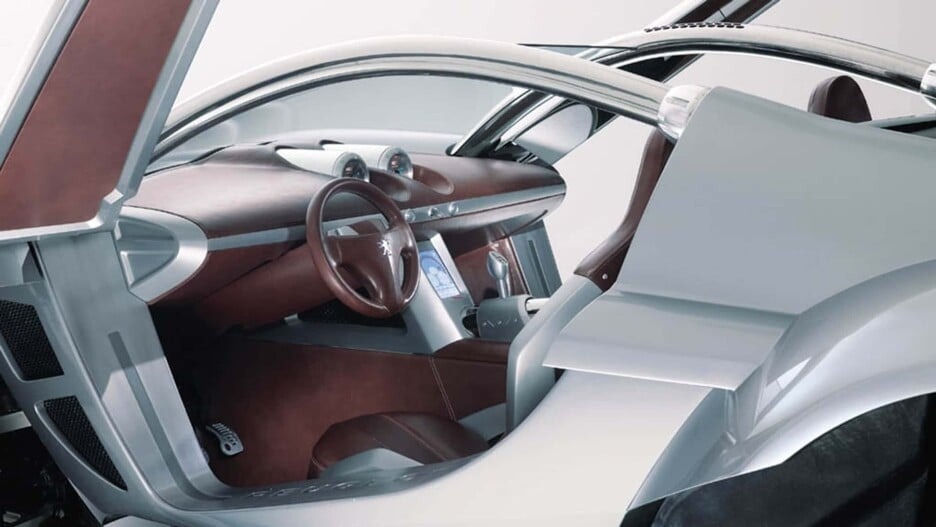This concept presented in 2003 is characterized by two diesel engines and two automatic transmissions, and was created to pay tribute to the rich motorsport tradition of the French brand.
Unlike the good-natured Viking Hogar the Terrible, the French four-wheeler had aggressive exterior lines and a double “heart” ready to tame the dunes.
Thus, in 2003, the Peugeot Hoggar concept was born, a futuristic vision of an off-road buggy that combined high performance with the most modern technical solutions of the time.
Designed to handle the most demanding scenarios, the Hoggar was powered by two supercharged HDi diesel engines of 2,100 cc, with a total of 360 hp. Each engine had its own six-speed gearbox, but control was unified via a single accelerator pedal and a common gear lever. A pioneering solution that hinted at modern hybrid architecture and integrated management systems.

The Hoggar’s structure used a carbon fiber honeycomb body, reinforced with stainless steel elements that also served as air intakes for the two engines. The power units were mounted on separate tubular frames, which served as suspension struts.
Almost four meters long and two meters wide, the Hoggar had the typical adventurous spirit of a dune buggy, but Peugeot designers interpreted it in a modern and sophisticated way. The exterior style was aggressive, and the interior was dominated by luxury and high technology, with natural leather, fine materials, a multi-function screen, navigation, cameras and an MP3 audio device, which was a surprising list of equipment for the time.

Behind the concept lies a deep heritage, which was the basis of this project. Peugeot has a long tradition in African racing, from the 404 model of the sixties to the legendary 504 of the following decade, all the way to the triumph of the racing models 205 T16 and 405 Turbo 16 in the Paris-Dakar rally. The tradition has been revived in recent years with the 2008DKR model, winner of the 2016 Dakar.
The Peugeot Hoggar never went into production. It was created to celebrate the off-road roots of the brand. At the same time, it was created as a laboratory of style and technology, the solutions of which were subsequently implemented in the series models of the brand.